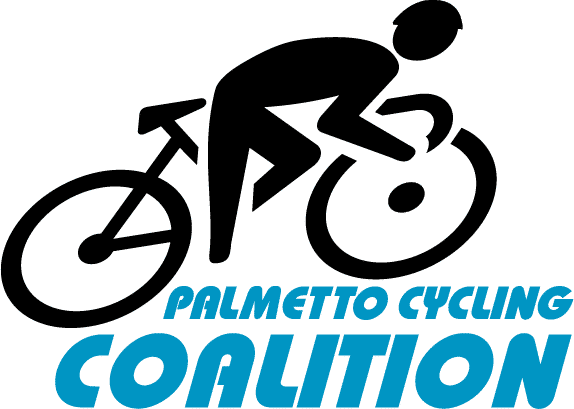Action Alert: SCDOT’s MTP 2020!
Tell SCDOT what you think about their Multimodal Transportation Plan!
For the next 20 years SCDOT has set their Vision, Goals, Objectives, Performance Management, and Funding Prioritization, and they won’t rethink this for another 5 years. The Palmetto Cycling Coalition read through all 161 pages and formed a comment letter, in coordination with the SC Livable Communities Alliance. They need to hear from all of us. The deadline for comment is this Thursday, August 20th.
We suggest the following comment below at this SCDOT public link.
“We applaud SCDOT in recognizing the value of multimodalism, for safe mobility, economic competitiveness, and community vitality. Further, we appreciate SCDOT’s stated goals in forming partnerships, employing a data driven approach, establishing zero fatalities as the goal, and encouraging all possible funding sources.
The following we found in need of more attention:
- Recognize the limitations of the survey, which is absolutely not a representation of South Carolina, based on demographics listed.
- Plan Development: Recognize the limitations of the survey. The public input process from the 2020 MTP Plan Update is less robust than that from 2015, so limitations of the survey should be recognized. For instance, survey input included only 3.8% African American participants, while South Carolina is 28% African American (p.9). While we support some of the results, the survey process was not robust or representative, so it should be considered within those limitations.
- There should be a performance measure established for non-motorized users, under Mobility & System Reliability, which falls within SCDOT’s legislatively prescribed duties.
- Vision, Goals, Objectives, and Performance Measures: There is no performance measure established for non-motorized users, under Mobility & System Reliability. Under Objectives and Performance Measures, safe non-motorized travel should also be prioritized, since it’s intricately related. This is especially true since SCDOT’s stated legislative mission is “safe movement of people and goods” (p.18).
- Add that Non-motorized planning and project selection processes should be an Equity goal.
- Vision, Goals, Objectives, and Performance Measures: Under Equity goals, add that Non-motorized planning and project selection processes include this consideration. Gross disparities exist in crash statistics for people walking and bicycling, so proactively mitigating that disparity should be listed as an Equity goal. (p.23).
- Set a target safety performance metric that flattens the curve in the near term, with reduction longer term, since various new Complete Streets policies are imminently arriving at SCDOT.
- Performance Management: The target safety performance metric for non-motorized travel must not be 10% greater than previous year (p.26). This sets failure as the goal. Recognizing the skyrocketing crash statistics, recommend flattening that curve in the near term, with reduction longer term, since various new Complete Streets policies are imminently arriving at SCDOT, with countermeasures deployed soon.
- Congestion relief through widening alone is impossible and financially irresponsible. But it can be more cost effective if in tandem with implementing Pedestrian & Bike Master Plans and increasing transit service, reducing some trips and miles traveled via cheaper options.
- Multimodal Needs: Congestion relief only through widening roads is prohibitively expensive ($8 Million per mile), so this should occur in tandem with implementing Pedestrian & Bike Master Plans and increased transit service, enabling more modal choice, where citizens reduce some trips and miles traveled via more options to bike and walk and take transit when feasible. (p.66). Congestion relief through road widening alone is not economically sustainable. This singular strategy fails to achieve the goal of reducing delay: between 1993 and 2017, the US increased road lane miles by 42%, while population only grew 32%, yet traffic delay INCREASED by a staggering 144%, completely failing to achieve delay reduction (Smart Growth America, the Congestion Con). Further, relieving congestion by adding lane miles can increase safety hazards. Road Diets are a FHWA Proven Safety Countermeasure, and they benefit all road users, including non-motorized.
- Multimodal Performance Management can and should be more robust, through better use of data.
- Findings and Strategies: Multimodal Performance Management performance measures should be more robust. While number of non-motorized serious injuries and fatalities is the FHWA performance measure, a more adequate and meaningful metric should be used for pedestrians in South Carolina: number per capita. Our population is rising so fast, these numbers must be calibrated with a proper denominator, and currently per capita for pedestrians is the best measure, per NHTSA and others. Further, if equity for safe multimodal access is a goal, then it should be considered in a performance measure. SCDOT should consider setting an equity performance measure tied to a readily available GIS metric: Social Vulnerability Index (SVI). This variable is very likely closely tied to existing inequities in South Carolina’s multimodal safety, and the CDC and SCDHEC hold this aggregate GIS variable (SVI) as a goal in attaining health equity (p.82)
- SCDOT should use 100% (not 50%) of its Transportation Alternatives (TAP) money from FHWA for its intended purpose, which would increase SCDOT’s TAP share from $7.4 to $14.8 Million.
- Findings and Strategies: SCDOT should use 100% of its Transportation Alternatives (TAP) money from FHWA for transportation alternatives. This is one more way to assist in meeting non-motorized needs. As SCDOT stated (p.83) “Improve efforts to leverage federal dollars to generate funds to address multimodal needs”, SCDOT should discontinue transferring 50% of their federal TAP money to an alternate location. Most states in the USA retain 100% of TAP for its federally intended purpose. SCDOT maintains “approximately $7.4 Million is distributed annually towards eligible projects in this program.” (p.68), and that could be $14.8 Million if SCDOT decided to retain 100% for this purpose, as most other states do.
